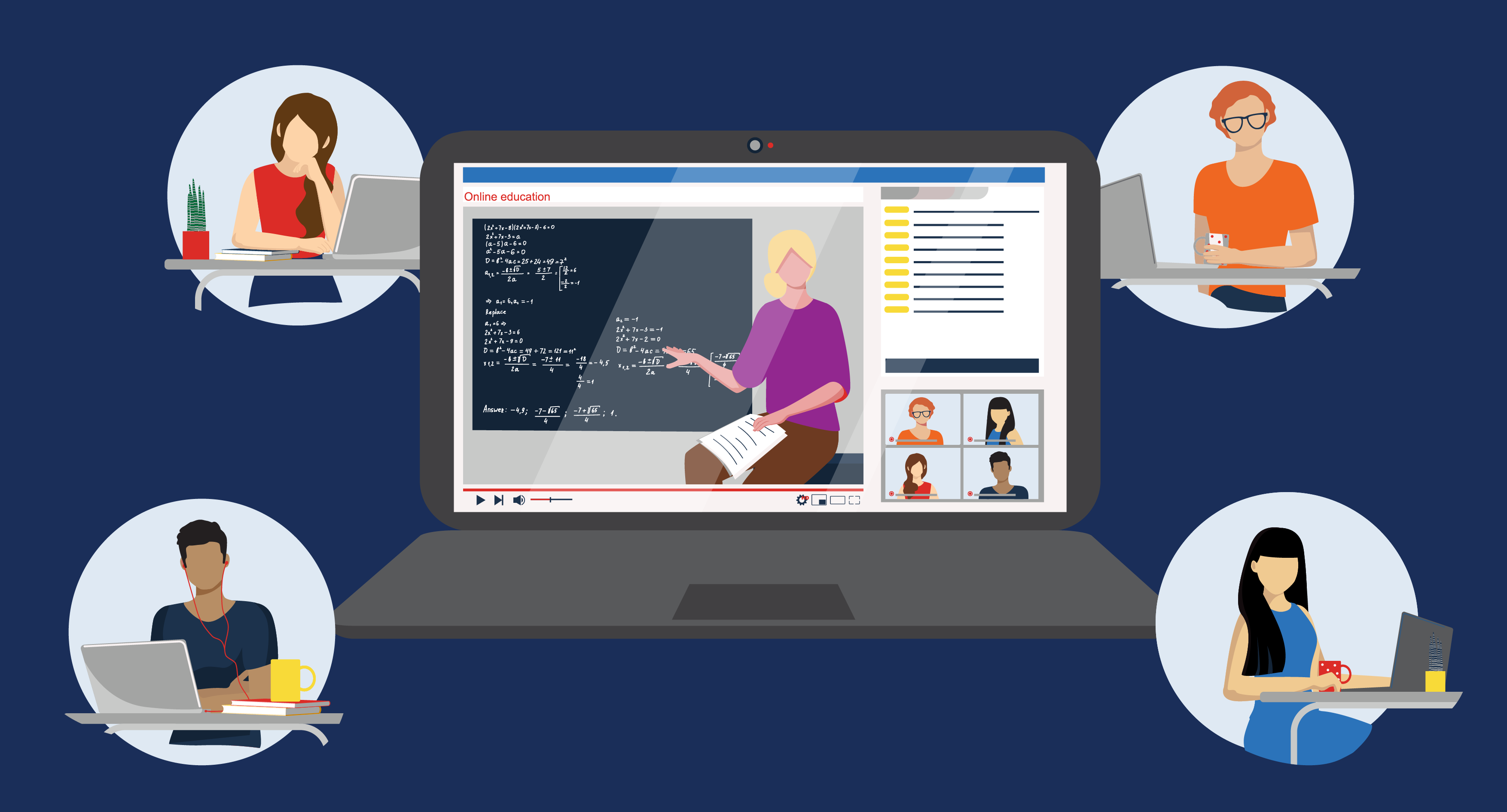Beginner’s Guide to Remote Teaching

We did it. Call the history book companies, because 2020 is finally the year we all stopped being scared of living virtually and found out how many things actually can be done from home. Just ask teachers!
Despite all the drawbacks of not being able to interact with students in-person, 2020 proved that there are just as many (if not more) benefits to being able to teach from anywhere, to anyone, no matter the distance.
With the right tools and techniques, remote teachers can design brand new lesson plans and interactive presentations that wouldn’t even be possible within the confines of a classroom. Parents can get involved with their child’s learning like never before. Real world activities can be integrated into your assignments like never before.
The benefits of hosting your teaching experience online don’t just apply to traditional school systems either.
Professional instructors can start to expand their business well past the limits of their driving distance and provide classes online to anyone who wants to learn. With the concept proven on even the international scale, that means right now is actually the perfect time to get into the business of remote teaching.
Unfortunately, as any teacher will tell you, there’s a difference between doing something and doing something right.
Whether you’ve been trying to adapt to remote teaching for a while, or are just starting out today, there are a number of tools and tactics that will help take you from a beginner to a certified master.
Plus, if you want even more expert assistance on your remote teaching journey, we’ve included links to our in-depth blogs on each step.
Step 1: Get Yourself a Remote Teaching Platform
Classrooms are built to house everything you need to successfully teach a whole lesson plan to a whole roomful of students. A desk to plan and store assignments, a whiteboard to visually explain topics, a projector to give presentations, seats close enough for students to ask questions and work together—the works.
Remote teaching platforms are designed to give you all those same classroom amenities, just usable from anywhere!
Now, you have cloud storage for all your readings, assignments, and quizzes. Lectures now take place over video chat or shared slideshows. Instead of raising their hands, now students can post questions in live chat for you or other students to answer.
Similar logic applies to instructors and personal trainers as well. Rather than hosting cooking classes in person, you could post the ingredients list beforehand and then demonstrate all the steps live on video. Instead of meeting with clients for workouts at the gym, you can design personal calendars with built-in goals and instructional demos.
To find out more about remote teaching platforms, and for help deciding which one matches your teaching style, check out our full blog.
Step 2: Decide Which Remote Teaching Tools are Right for Your Classes
Now that your whole curriculum is online, how exactly do you get it out of your brain and into the hands of your students? Yes, the remote teaching platforms we went over in Step 1 are a great place to start, but what about everything else?
- Regular video chats are no replacement for showing work and giving examples on a whiteboard.
- You can’t just be handing out your personal cell phone number to every student and parent.
- Alerts and due date reminders still need to go out in a way students can reliably see.
- You still need to check your messages and remain reachable throughout the whole day.
The list goes on, but you get the idea.
There isn’t one, single, glorious catch-all solution, which means you’ll need multiple applications and communications channels to provide a quality learning experience for your students. To help you get started, we put together this list of the most essential tools to take your remote teaching to the next level.
Step 3: Teach Yourself Tons of New Remote Teaching Skills
While many aspects of running a remote classroom are new, remember that good teaching instincts will serve you well in any environment—even a virtual one. To put it more simply: you got this! You’re a great teacher in the classroom and you’ll be a great teacher online too.
So instead of trying to rewire your brain to somehow teach differently, focus your own learning on the new communications channels you need to engage with students and how to use each of them effectively.
Establish clear sets of goals. Consider the different paths students might take to reach those goals depending on their age, schedules, and access to technology. Never be afraid to take a step back and let your students know that it’s all a learning process for you too.
There are tons of new challenges that tag along with teaching remotely, which is why we put together a list of the top tactics that will help you succeed.
Step 4: Become a Remote Work Master
This is definitely the most difficult step—and the one where we can provide the least guidance—because it all comes down to practice, practice, and (you guessed it) more practice.
By this point:
- You should have your assignments and curriculum set up in a remote teaching platform that meets most of your needs.
- You should have the rest of your virtual toolbelt filled out with communications apps that keep you in touch with both students and parents.
- And you should have enough remote teaching tactics in your back pocket to make Sun Tzu jealous of how well you’re about to handle your upcoming lessons.
- Now it’s up to you to take everything you’ve learned in this Beginner’s Guide and keep teaching, trying, and improving until you feel just as comfortable in front of a webcam as you do in a classroom!
Don’t worry though, your friends at FluentStream are always here to answer your questions and provide all the remote teaching advice you could ever need. Give us a call at 303-GO-CLOUD or ask our communications experts at sales@fluentstream.com.


